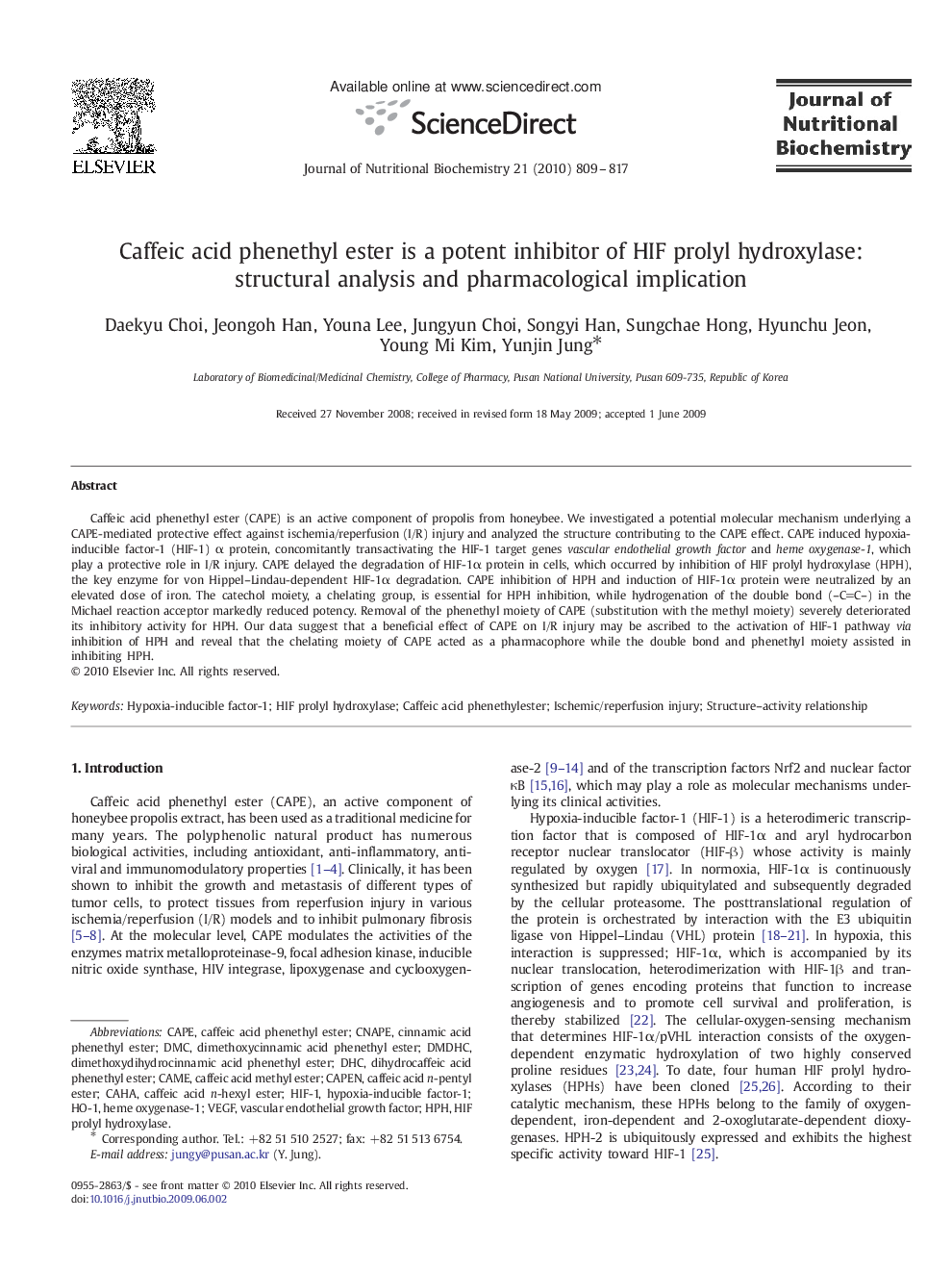| Article ID | Journal | Published Year | Pages | File Type |
|---|---|---|---|---|
| 1990109 | The Journal of Nutritional Biochemistry | 2010 | 9 Pages |
Caffeic acid phenethyl ester (CAPE) is an active component of propolis from honeybee. We investigated a potential molecular mechanism underlying a CAPE-mediated protective effect against ischemia/reperfusion (I/R) injury and analyzed the structure contributing to the CAPE effect. CAPE induced hypoxia-inducible factor-1 (HIF-1) α protein, concomitantly transactivating the HIF-1 target genes vascular endothelial growth factor and heme oxygenase-1, which play a protective role in I/R injury. CAPE delayed the degradation of HIF-1α protein in cells, which occurred by inhibition of HIF prolyl hydroxylase (HPH), the key enzyme for von Hippel–Lindau-dependent HIF-1α degradation. CAPE inhibition of HPH and induction of HIF-1α protein were neutralized by an elevated dose of iron. The catechol moiety, a chelating group, is essential for HPH inhibition, while hydrogenation of the double bond (–CC–) in the Michael reaction acceptor markedly reduced potency. Removal of the phenethyl moiety of CAPE (substitution with the methyl moiety) severely deteriorated its inhibitory activity for HPH. Our data suggest that a beneficial effect of CAPE on I/R injury may be ascribed to the activation of HIF-1 pathway via inhibition of HPH and reveal that the chelating moiety of CAPE acted as a pharmacophore while the double bond and phenethyl moiety assisted in inhibiting HPH.
